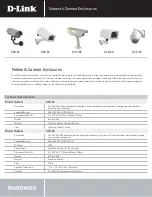
What group of people have had the greatest success with it and why?
All groups
have had some level of success in using the orbiTouch. The group that has had the
greatest success, however, is perhaps children and young adults with autism. They
learn to use the orbiTouch very quickly and have had some of the fastest typing
speeds ever recorded on the orbiTouch.
Can I change the character layout?
Yes, through your computer’s control panel. The
orbiTouch sends the same typing commands as any other keyboard and mouse
connected to your computer. As such, anything you can change using a regular
keyboard or mouse on your PC, you can change with using the orbiTouch. These
include things like key repeat rate, mouse cursor speed, keyboard layout (changing the
alphabet), etc.
Will the orbiTouch cause damage to other parts of the arm given that it eliminates
finger motion and wrist motion?
Extensive research has lead to the design of the
orbiTouch Keyless Keyboard. Each orbiTouch dome moves 7 millimeters from their
center position. This distance is about the same that most typists move their hands in
typing on a regular keyboard. As such, the biomechanical requirements in the upper
arm in using a regular QWERTY keyboard are similar to those when typing with the
orbiTouch.
Does the orbiTouch prevent or eliminate carpal tunnel syndrome?
While we are still
collecting data on whether the orbiTouch eliminates carpal tunnel syndrome (CTS),
our research data does indicate that it can help prevent or reduce the repetitive
motions that are suspect in causing CTS. The unique design of the orbiTouch keyless
keyboard eliminates the finger and wrist motions that most often contribute to and
aggravate CTS symptoms.
How do the domes move? How far?
They slide into 8 positions. They move 7 mm
which is about the thickness of a pencil.
How many “keys” does it have?
128. That is at least as many as a standard keyboard.
How do I switch back and forth between keyboard and mouse mode?
Simply slide
the left dome down twice.
How does the mouse work?
First, slide the left dome down twice to enter "Mouse
Mode." Once in mouse mode, the right dome controls cursor movement, and the left
dome does the mouse "clicks." The "clicks" are performed by sliding the left dome to
the left for "left click," and right for "right click”.
24







































